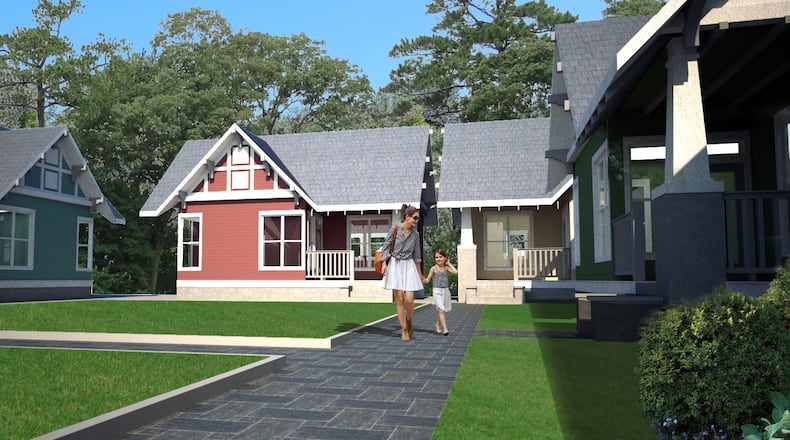Houses in Clarkston’s “tiny home neighborhood” are now for sale.
The “Cottages on Vaughan” project is considered the first of its kind in the state, with eight small houses sharing a half-acre lot and surrounding a common yard area.
One of the homes is 250 square feet and the others are 500 square feet. The tiniest house has already been sold, and three or four of the others are still available for purchase at $145,000, according to Will Johnston, the founder and executive director of the MicroLife Institute, the Atlanta-based nonprofit behind the development that promotes minimalism and tiny houses.
Construction began on the development in February and owners will be able to move in by December, Johnston said.
“We’re just excited to say this project is coming to fruition,” he said. The development was approved last May.
The “tiny home movement” has not become widespread since it began more than 10 years ago, but proponents hope the time is coming for the industry.
In Clarkston, where the median household income is about $38,000, the median home value is almost $200,000, more than the cost of the new tiny homes, according to Zillow. Across DeKalb County, the median price of listed homes is about $275,000.
While tiny homes and their lower prices offer more affordable entry into home ownership, the price per square foot can be more expensive than their more spacious counterparts.
Advocates hope permanent tiny home neighborhoods — rather than homes on wheels — present a possible avenue for addressing soaring home prices. Analysts, however, say developers will continue to face challenges as they navigate decades-old zoning laws written for large, single-family homes.
Johnston said he hopes the Clarkston project can be an “an educational tool moving forward” for future pocket neighborhood projects.
Anyone who is interested in purchasing one of the tiny homes in Clarkston can email Kim Bucciero at kim@microlifeinstitute.org or visit the MicroLife Institute's website to learn more.
About the Author
Keep Reading
The Latest
Featured



